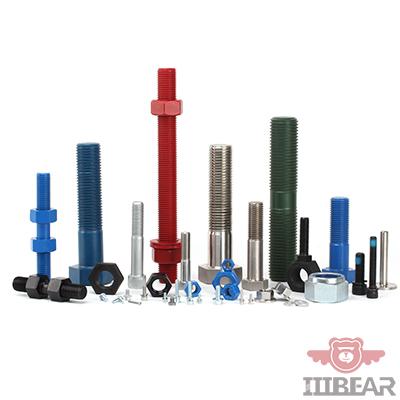Introduction: The Importance of Proper Fastener Installation
Fasteners are integral components in construction, manufacturing, automotive, and various other industries, holding everything from structural elements to mechanical parts together. The installation of fasteners, such as bolts, screws, and nuts, directly affects the strength, safety, and longevity of the assembled system. Improper installation can lead to failures, which may result in costly repairs and safety hazards. This article will cover essential tips for fastener installation to ensure optimal performance and reliability across various applications.

1. Select the Right Fastener for the Job
The first step in achieving a secure and durable fastening solution is selecting the appropriate fastener. Different fasteners are designed for specific applications and environments. For example, stainless steel fasteners are ideal for corrosive environments like marine applications, while carbon steel fasteners are commonly used in construction and automotive industries.
Factors to consider when selecting a fastener include:
- Material Compatibility: Choose fasteners that are compatible with the materials you are fastening. Using a bolt made from a different material than the base materials can lead to corrosion and weakening over time.
- Load-Bearing Capacity: Ensure that the fastener is rated to handle the load and stress it will be subjected to.
- Environmental Conditions: Consider whether the fastener will be exposed to moisture, chemicals, or extreme temperatures. Choose corrosion-resistant options when needed.
By selecting the right fastener, you can avoid premature failure and ensure the longevity of your project.
2. Ensure Proper Torque Application
Proper torque is essential to ensure that fasteners are tightened correctly. Too little torque can result in an insecure fastening, while over-tightening can lead to stripped threads or even damage to the base material. It is crucial to follow the manufacturer's recommended torque specifications for each fastener.
How to Apply the Correct Torque:
- Use a Torque Wrench: A torque wrench allows for precise control over the amount of force applied, ensuring that the fastener is tightened to the correct specification.
- Follow Manufacturer Guidelines: Each fastener and application will have a specific torque value, typically found in product documentation. Adhering to these values ensures proper load distribution and prevents damage.
- Tighten in Stages: When working with multiple fasteners, tighten them in stages, starting with the center and moving outward. This ensures even pressure distribution.
Proper torque helps maintain the fastener’s clamping force, preventing loosening or fatigue under stress.
3. Use Appropriate Tools and Techniques
Using the right tools for installation is just as important as selecting the right fastener. Tools that are too large or too small can damage the fastener or base materials, leading to ineffective installation.
Key Tools for Fastener Installation:
- Socket and Wrench Sets: Ideal for bolts and nuts. Ensure you are using the correct size socket to avoid rounding off edges.
- Impact Drivers: Used for screws and bolts that require high torque. However, it's essential to use the appropriate settings to prevent over-tightening.
- Drill and Drill Bits: When pre-drilling holes, make sure the drill bits match the size of the fasteners. Too small a hole can cause the fastener to bind, while too large can reduce its effectiveness.
Additionally, using the correct technique during installation is crucial. Always ensure that the fastener is inserted perpendicularly to the base material to avoid cross-threading or misalignment.
4. Prevent Fastener Loosening with Locking Mechanisms
In certain applications, especially those exposed to vibration or dynamic loads, fasteners can loosen over time. This can lead to the failure of the assembly, causing safety risks and expensive downtime. To prevent this, consider using locking mechanisms.
Types of Locking Mechanisms:
- Lock Washers: These washers help maintain tension on fasteners by providing spring action that resists loosening.
- Nylon Insert Lock Nuts: These nuts have a nylon insert that grips the threads of the bolt, reducing the likelihood of loosening.
- Thread-Locking Adhesives: These adhesives, such as Loctite, are applied to the threads of the fastener to prevent loosening under vibration or extreme conditions.
Using these locking mechanisms ensures that the fastener remains securely in place over time, even under harsh operating conditions.
5. Regular Inspection and Maintenance
Regular inspection and maintenance of fasteners are crucial to ensuring their long-term performance. Over time, even the most robust fasteners can show signs of wear, corrosion, or loosening, especially in high-stress environments.
Steps for Effective Fastener Maintenance:
- Check for Rust or Corrosion: In environments exposed to moisture or chemicals, inspect fasteners regularly for signs of rust. Replace corroded fasteners promptly to avoid failure.
- Monitor Torque Settings: Periodically check that fasteners are tightened to the correct torque specification, especially in critical applications.
- Replace Worn Fasteners: Fasteners that show signs of wear, such as stripped threads or cracks, should be replaced immediately to prevent failure.
A proactive maintenance routine helps identify issues before they escalate, ensuring the ongoing reliability of your assemblies.
Conclusion: Achieving Optimal Performance with Proper Installation
Fastener installation is more than just screwing or bolting pieces together; it’s about ensuring long-term performance and safety. By following these best practices—selecting the right fasteners, applying the correct torque, using the appropriate tools, utilizing locking mechanisms, and maintaining regular inspection—you can enhance the performance and reliability of your fasteners in any application. Proper installation not only reduces the risk of failure but also extends the service life of the assembly, saving time and money in the long run.

